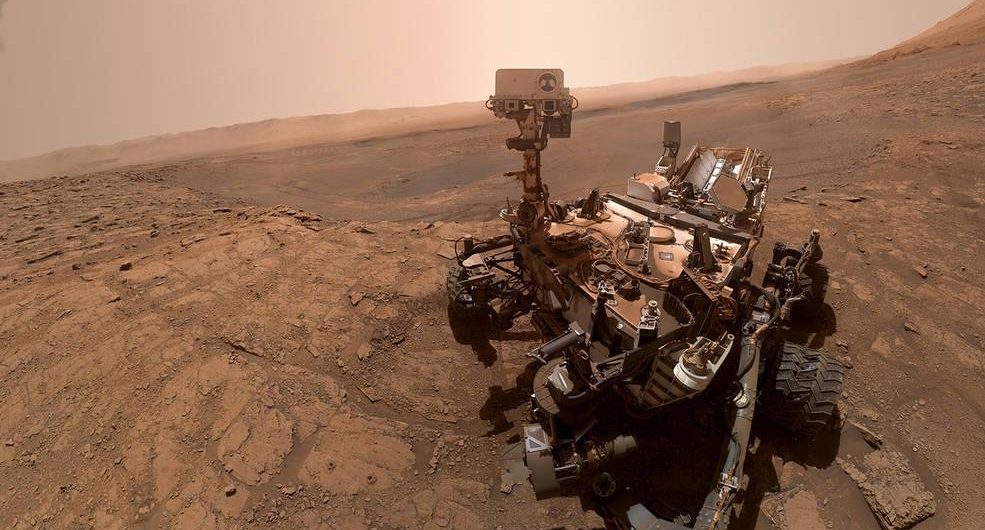Since it arrived in Gale Crater in 2012, the Curiosity meanderer has been concentrating the Martian surface underneath its wheels to get familiar with the planet’s history. Be that as it may, Curiosity likewise put its nose noticeable all around for a major sniff to comprehend the Martian climate.
Up until now, this sniffing has brought about certain discoveries that researchers are as yet attempting to get it.
Prior this year, the wanderer’s tunable laser spectrometer, called SAM, which represents Sample Analysis at Mars, recognized the biggest measure of methane at any point estimated during its crucial.
SAM has likewise discovered that after some time, oxygen acts in a way that can’t be clarified by any compound procedure researchers as of now get it.
SAM has had a lot of time — around six years — to sniff and break down the barometrical sythesis on Mars. The information uncovered that at the surface, 95% of the air is carbon dioxide, trailed by 2.6% atomic nitrogen, 1.9% argon, 0.16% oxygen and 0.06% carbon monoxide.
Like Earth, Mars experiences its seasons; throughout a year, the pneumatic stress changes. This happens when the carbon dioxide gas solidifies in winter at the posts, causing the pneumatic force to lower. It rises again in the spring and summer, redistributing crosswise over Mars as the carbon dioxide dissipates.
In connection to the carbon monoxide, nitrogen and argon likewise pursue comparative plunges and pinnacles. However, oxygen didn’t.
Shockingly, the oxygen really rose by a pinnacle increment of 30% in the spring and summer before dropping back to ordinary in the fall.
Given the measure of time Curiosity has been checking the air, it had the option to recognize that this example rehashed, but with fluctuating measures of oxygen.
The variety recommends that the oxygen is being made by something, at that point removed.
“The first time we saw that, it was just mind boggling,” said Sushil Atreya, study creator on another paper about the oxygen levels and educator of atmosphere and space sciences at the University of Michigan.
The examination distributed Tuesday in the Journal of Geophysical Research: Planets.
So as to preclude blunders, the researchers checked to be certain SAM was working appropriately, yet found no issues.
“We’re struggling to explain this,” said Melissa Trainer, study author and planetary scientist at NASA’s Goddard Space Flight Center. “The fact that the oxygen behavior isn’t perfectly repeatable every season makes us think that it’s not an issue that has to do with atmospheric dynamics. It has to be some chemical source and sink (of elements into the soil) that we can’t yet account for.”
It relates back to the methane riddle.
The June perusing showed 21 sections for each billion units by volume, or ppbv. That methods for the volume of air on Mars being surveyed, one billionth of the volume of air is methane.
So for what reason is this bizarrely huge measure of methane so fascinating? On Earth, microbial life is a key wellspring of methane. Be that as it may, NASA likewise cautioned that desires forever ought to be overseen because of the way that collaborations among rocks and water can likewise make methane, and Mars has water and a plenitude of rocks.
“With our current measurements, we have no way of telling if the methane source is biology or geology, or even ancient or modern,” said SAM Principal Investigator Paul Mahaffy of NASA’s Goddard Spaceflight Center in Greenbelt, Maryland.
This isn’t the first run through methane has been distinguished on Mars by Curiosity. Through the span of its crucial arriving in August 2012, Curiosity has distinguished methane commonly and ponders have been expounded on how the gas levels really seem to rise and fall contingent upon the season. It can spike as much as 60% throughout the mid year.
Could the two be associated with a comparative science since they’re fluctuating a similar way?
“We’re beginning to see this tantalizing correlation between methane and oxygen for a good part of the Mars year,” Atreya said. “I think there’s something to it. I just don’t have the answers yet. Nobody does.”
The starting point of the methane or oxygen won’t be obvious on the grounds that the meanderer doesn’t have any instruments that can follow or decide the source. And keeping in mind that both oxygen and methane can be made from natural sources, they can likewise emerge because of science, similar to the collaboration of water and shakes.
“We have not been able to come up with one process yet that produces the amount of oxygen we need, but we think it has to be something in the surface soil that changes seasonally because there aren’t enough available oxygen atoms in the atmosphere to create the behavior we see,” said Timothy McConnochie, study co-writer and aide look into researcher at the University of Maryland.
The researchers needed to share their discoveries in the expectations that Martian specialists might have the option to help figure out what procedure is making these increments.
“This is the first time where we’re seeing this interesting behavior over multiple years. We don’t totally understand it,” Trainer said. “For me, this is an open call to all the smart people out there who are interested in this: See what you can come up with.”
The first Daniel Potter store was opened in 1994 in Oxford Street,London, and there are now 11 stores throughout England, Scotland and Wales. The first Australian Daniel Potter concession opened in a Sydney Myer store in November 2016
Disclaimer: The views, suggestions, and opinions expressed here are the sole responsibility of the experts. No People Reportage journalist was involved in the writing and production of this article.





